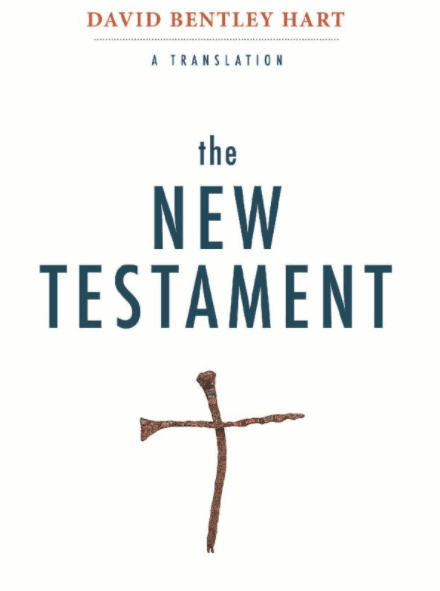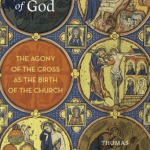 What depresses me about Bible translation debates today is tribalism. Some have raised the bar of this conversation to such heights that variation is tantamount to heresy. Translations can also be a window to our heart and theology and preferences. Not only can be, they are.
What depresses me about Bible translation debates today is tribalism. Some have raised the bar of this conversation to such heights that variation is tantamount to heresy. Translations can also be a window to our heart and theology and preferences. Not only can be, they are.
So here goes with a sketch of tribalist translation tendencies. Each of these is partially true but not wholly true, so let’s not reify but have a little fun…
NRSV for traditional mainliners;
CEB for ready-to-change mainliners;
ESV for Reformed complementarian Baptists;
HCSB for LifeWay store buying Southern Baptists;
NIV for complementarian evangelicals;
TNIV for egalitarians;
NIV 2011 for, well, both complementarians and egalitarians;
NASB for those who want straight Bible, forget the English;
NLT for generic brand evangelicals;
Amplified for folks who have no idea what translation is but know that if you try enough words one of them will hit pay dirt;
NKJV and KJV for Byzantine manuscript-tree huggers;
The Message for evangelicals looking for a breath of fresh air and seeker sensitive, never-read-a-commentary evangelists who find Peterson’s prose so catchy.
I put David Bentley Hart in the category of a one-of-a-kind.
Sometimes it sounds like Christian culture wars because it is.
The problem is that these translations in taking sides betray what the New Testament actually is, and David Bentley Hart gets this right when he speaks freshly and boldly of what these writings are actually like:
They are not beguiling exercises in suasive rhetoric or feats of literary virtuosity; rather, they are chiefly the devout and urgent attempts of often rather ordinary persons to communicate something “seen” and “heard” that transcends any language, but that nevertheless demands to be spoken, now, here, in whatever words one can marshal. This is the special amphibology of Christian scripture. Whereas the Jewish Bible represents the concentrated literary genius of an ancient and amazingly rich culture—mythic, epic, lyric, historical, and visionary, in texts assembled over many centuries and then judiciously synthesized, redacted, and polished—the Christian New Testament is a somewhat unsystematically compiled and pragmatically edited compendium of “important documentation”: writings from the first generations of witnesses to the new faith, the oldest ambassadors to us from the apostolic and early postapostolic ages, consisting in quickly limned stories, theological discourses, and even a bit of historically impenetrable occasional writing. As such it draws one in by the intensity, purity, and perhaps frequent naivete of its language, not by the exquisite sheen of its belletristic graces (The New Testament: A Translation., xxii).
Claims of superiority in translation is a fail from the get-go because these translations are blendings of the language that lather them up into an acceptable product; they are designed for popular consumption; they fail to respect oddities and differences and stylistic crudities. These translations are all reliable but they are not the real thing itself.
Modern translations play nice and make nice. They claim more than they are.
So to an important point: the authority is the original text, not the translation. The original texts are in Hebrew and Aramaic (Old Testament) and Greek (New Testament). The authoritative text is not in English, regardless of how accurate the translation. No matter which translation you prefer, it is not the authoritative text for determining which translation is best. Yes, we need more to devote more time to study of the original languages.
The sweeping conclusion is this: unless you can read the original languages, you should avoid making public pronouncements about which translation is best. Instead, here’s my suggestion: if you don’t know the languages and can’t read them well enough to translate accurately on your own but you want to tell your congregation or your listeners which translate is best, you need to admit it by saying something like this: “On the basis of people I trust to make this decision, the ESV or the TNIV or the NRSV or the NLT is a reliable translation.”
We could get into the “intent” of translation, but that’s another post. Our intent is simple: to press upon everyone that there is a distinction between the text and a translation of the text. The authority is with the former; those who know that text are informed enough to decide about translations.
Another point being made in dustups about translations has to do with translation theory. I hear it like this all the time: I prefer “dynamic equivalence” (functional equivalence) or I prefer “formal equivalence.” Sometimes it gets expressed by such words as “paraphrase” or “literal” and sometimes by “bad” and “good.” Or “loose” and “tight.” Most words are translated in all Bible translations with formal equivalence while some words are translated more or less in a dynamic, or functional way.
In spite of trumpet blowing and the tooting of horns by the ESV crowd, there isn’t really a radical commitment to theory or by dynamic equivalence — as if one can find some better way in English to the original languages “and” or “but” or “the” or “God.” Nor is there a radical commitment to “formal equivalence,” as if the Greek word order can be maintained in English and make sense, though at times the NASB gave that a try (much to the consternation of English readers). No one translates “God’s nostrils got bigger” (formal equivalence) but we translate “God became angry.” There are some expressions that can’t be translated woodenly unless one prefers not to be understood. (See Dan Wallace.)
The result of this is that all translations are on a spectrum of more or less formal and more ore less dynamic. Now one more complication: each translation will vary for individual words or phrases or clauses.
The most important book to read (so far as I know) for translation theory is the old book by Eugene Nida, The Theory and Practice of Translation, and I used to teach this book every year. The issue here is clear: there is an original text and there is a “receptor” language (English). It is the translator’s intent to take the original text and make it the receptor language in a way that is as “equivalent” as possible. The issue has to do with which one gains prominence when decision time comes? Everyone strives for “equivalence.” The TNIV people don’t think they are paraphrasing; they are translating the original text accurately into modern English.
Formal equivalence tends to move in the direction of “identity” — the idea that one can translate as simply as possible in a way that is as close to “identical” as one language can be to another. “And” becomes “and” and “gird up the loins of your mind” becomes “gird up the loins of your mind.” The more dynamic approach is as concerned with a modern reader being provoked to the same response as the original language provoked in the original writer/listener/reader. So, the spectrum moves from identical text to receptor’s response/understanding. The focus moves from “text in its original context” to “text in its modern context.” In one the emphasis is on rendering a text in as identical fashion as possible while the other is on rendering a text so that obstacles are removed to understanding. And another point: preachers and teachers, whether they like the formal or not, always explain the text in dynamic ways. All of this is connected to purpose of both translator and reader. It’s not simple and it’s not either-or.
It is not to be forgotten that the NT authors more often than not quote the Old Testament (Hebrew Bible) from its Greek translations (called Septuagint), and those translations were as dynamic at times as we see in modern dynamic translations — making it fairly obvious that use of dynamic translation is already at work in the New Testament we are now reading.
 Which leads me to David Bentley Hart’s The New Testament: A Translation. It’s neither dynamic nor formal, but both, and something else, too, but clearly more formal than anything else. A few general observations today:
Which leads me to David Bentley Hart’s The New Testament: A Translation. It’s neither dynamic nor formal, but both, and something else, too, but clearly more formal than anything else. A few general observations today:
First, he says “I have elected to produce an almost pitiless literal translation” (xvii). As such, Hart will give his readers a closer feel to the Greek of the NT than any translation available today. Even more than the NASB.
Hart has a desire to make the reader as uncomfortable as he can and that is because he thinks the NT itself — those early Christians and their view of wealth — were extremists, which aligns rather well with Hart’s extremist approach to translation.
On this Hart is himself just lopsided, delightfully so at times, but lopsided nonetheless. An introduction that dives as deeply into the theme of wealth and poverty in the New Testament, mostly by neglecting other themes (and there are plenty others to consider), is itself extreme.
Hart’s fascination with the radical edge tells us more about himself than the New Testament itself. Hart is by nature a contrarian; so is this translation. This will be to our good and our disagreement.
Second, I doubt this New Testament will work as a Sunday morning worship service Bible reading Bible. It won’t do for lectionary churches. But, with a little practice and a good reader, Hart can be used at times.
Third, he’s gone his own way on terms like Christos and made it “Anointed” (not Christ, not King, not Messiah); diabolos is “Slanderer” and ekklesia is “assembly” and not “church.” He says he’s not been entirely consistent, which makes for some oddities and questions. He’s tried, however, to render the same word in the same way throughout.
Fourth, he means to provoke the attention of readers so sometimes he has odd translations. He does this well.
“In the long twilight struggle between felicity and fidelity, the latter should always win out in the end” (xxi).
Fifth, Hart is not being nice and is not playing nice, and for that reason no issues that concern us today will show up: no inclusiveness for instance. When someone says what he says about translations, then I can respect that.
Sixth, Hart translates from the Critical as well as the Majority Text, which is more or less what the Orthodox Church uses today. So, he’s made his own decisions on which Greek Text to translate. I’m not even sure what he means by the “Critical” Text unless he means Nestle-Aland.
What I like most about Hart’s translation is that this a man who knows his Greek well enough to know the style of authors and to render those styles in approximate English that gives us a feel for their style. Translations today have decided in advance that the way to make the Bible read well is to make it sound like 21st Century American English. OK, but that decision obscures the individual vitality of the writers of the Bible itself! For that reason alone I will keep this translation nearby (and gripe about it as well):
Most of the authors of the New Testament did not write particularly well, even by the forgiving standards of the koine—that is, “common”—Greek in which they worked. The unknown author of the Letter to the Hebrews commanded a fairly distinguished and erudite style, and was obviously an accomplished native speaker of the tongue; and Luke, the author of both the third Gospel and the Acts of the Apostles, wrote in an urbane, unspectacular, but mostly graceful prose; the author of the first letter attributed to Peter was clearly an educated person whose primary language was a fairly refined form of Greek, while the author of the second letter wrote in a somewhat bombastic style, of the kind classically called Asiatic Greek; but the language of most of the canon is anything but extraordinary. Paul’s letters possess an elemental power born out of the passion of his faith and the marvel of what he believes has been revealed to him, and his prose occasionally flowers into a plain but startling lyricism; but his Greek is generally rough, sometimes inept, and occasionally incoherent. The Gospel of Mark contains obvious solecisms and is awkwardly written throughout. The prose of the Gospel of Matthew is rarely better than ponderous. Even the Gospel of John, perhaps the most structurally and symbolically sophisticated religious text to have come down to us from late antiquity, is written in a Greek that is grammatically correct but syntactically almost childish (or perhaps I should say, “remarkably limpid”), and—unless its author was some late first-century precursor of Gertrude Stein—its stylistic limitations suggest an author whose command of the language did not exceed mere functional competence. Then, of course, the book of Revelation, the last New Testament text to be accepted into the canon—it was not firmly established there throughout the Christian world until the early fifth century—is, if judged purely by the normal standards of literary style and good taste, almost unremittingly atrocious. And, in the most refined pagan critics of the new faith in late antiquity, the stylistic coarseness of Christian literature often provoked the purest kind of patrician contempt (xxi-xxii).
If you want to feel these differences, read Hart. If you’d like to feel better about your Bible, read the NIV or the ESV or the NLT or the NRSV or the CEB.
I’ll do more posts on Hart’s translation, but I want to say this here: big mistake not to have chapters at the top of each page. It’s how we all find our way in the Bible.












